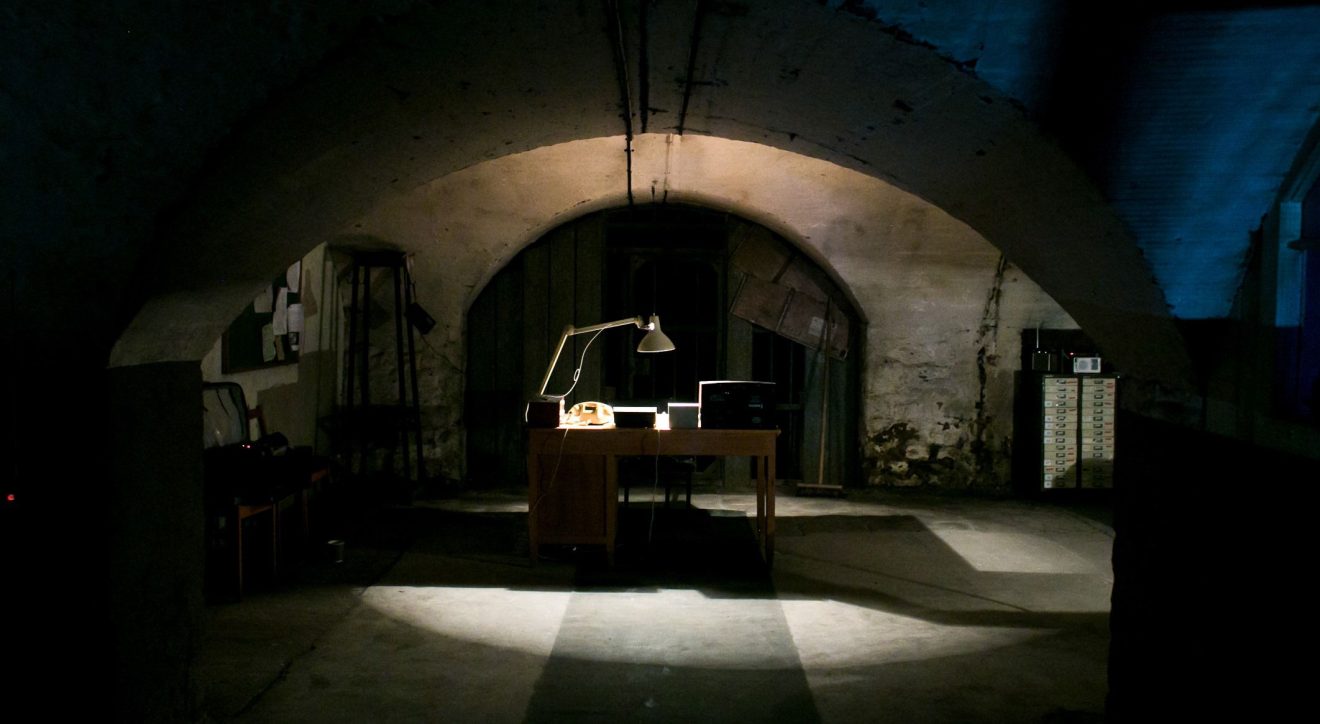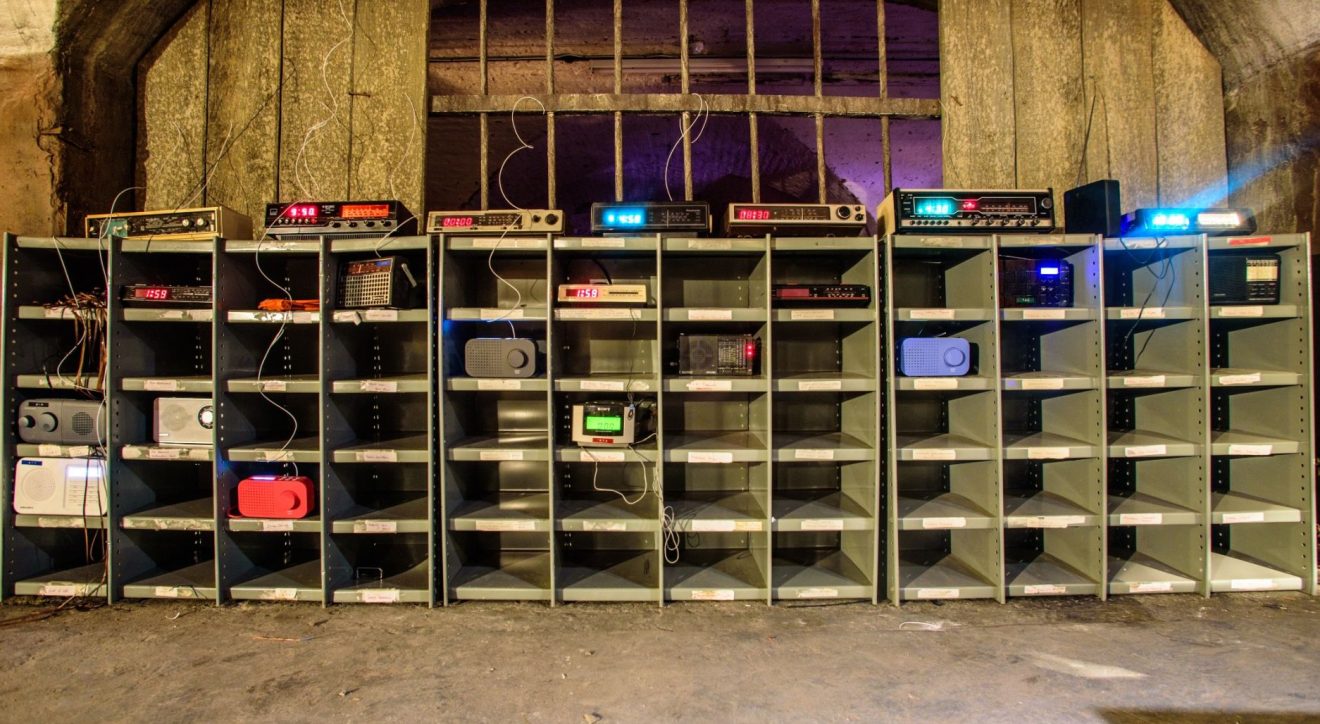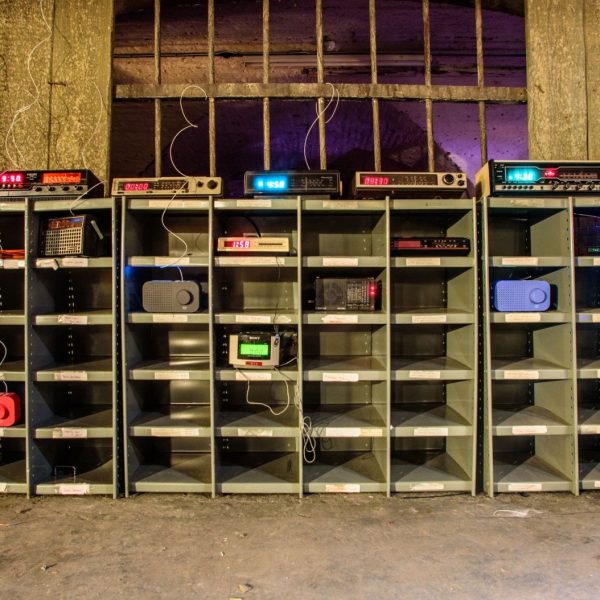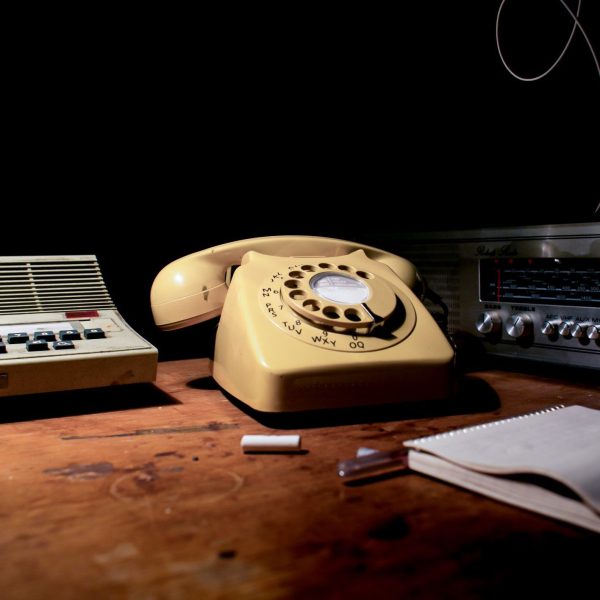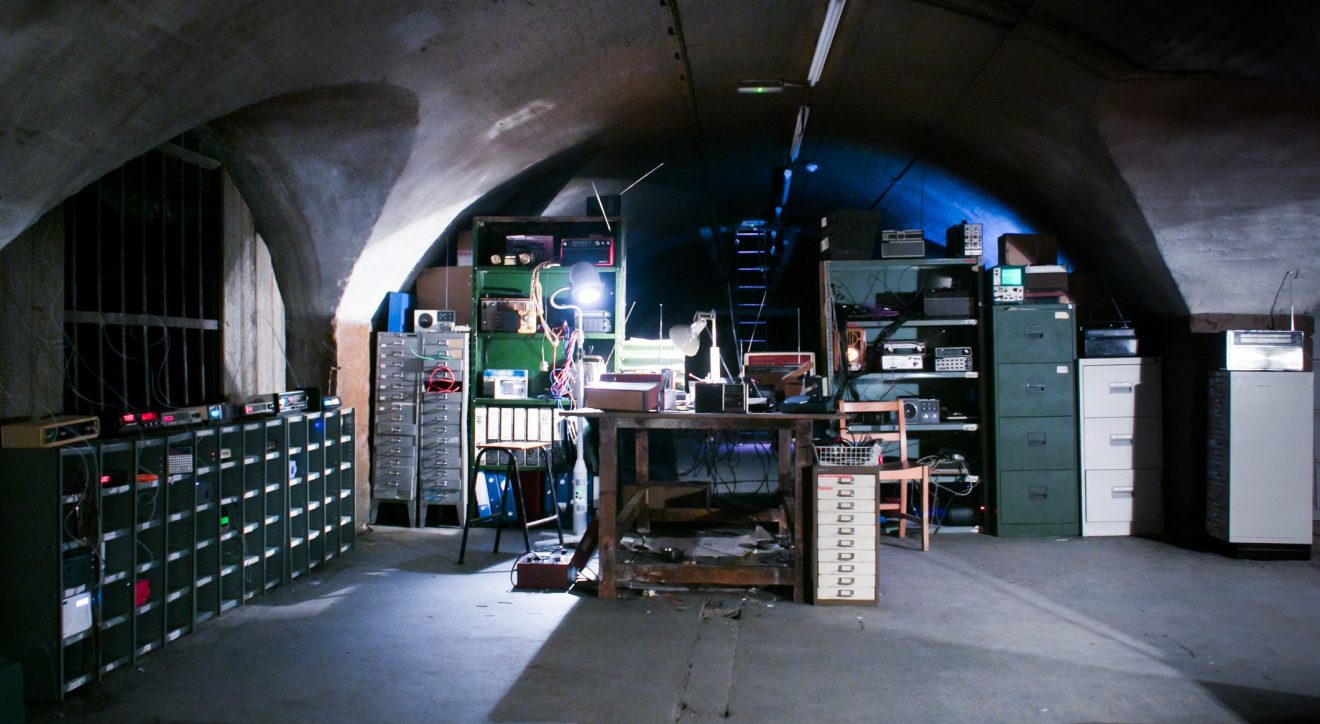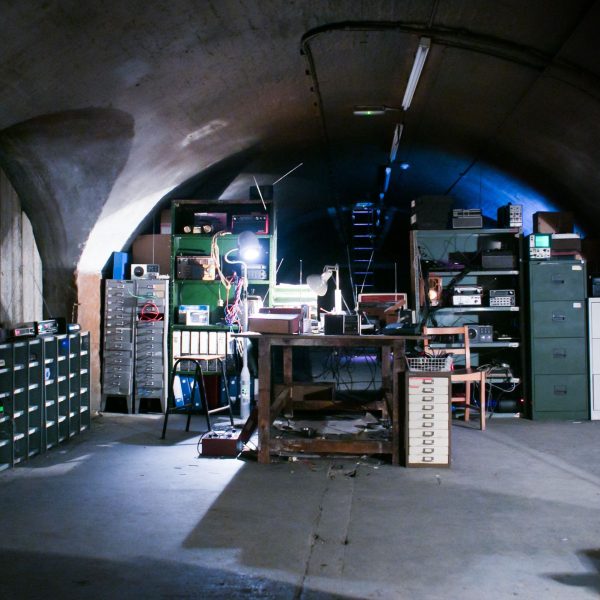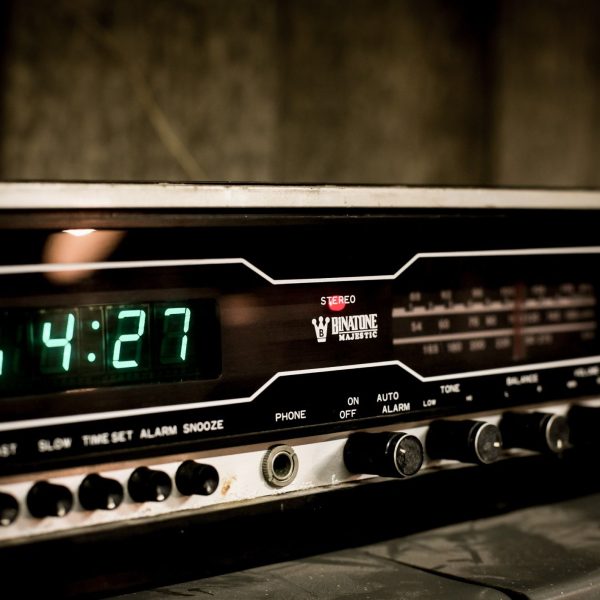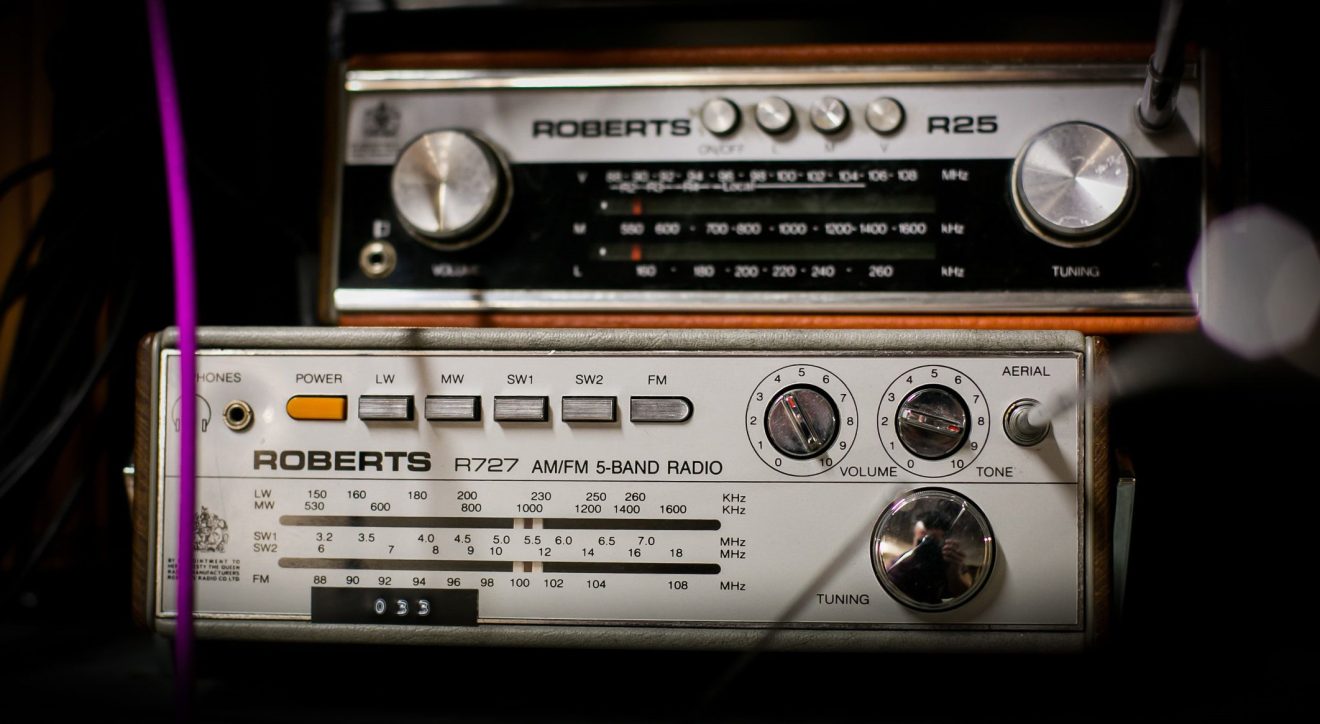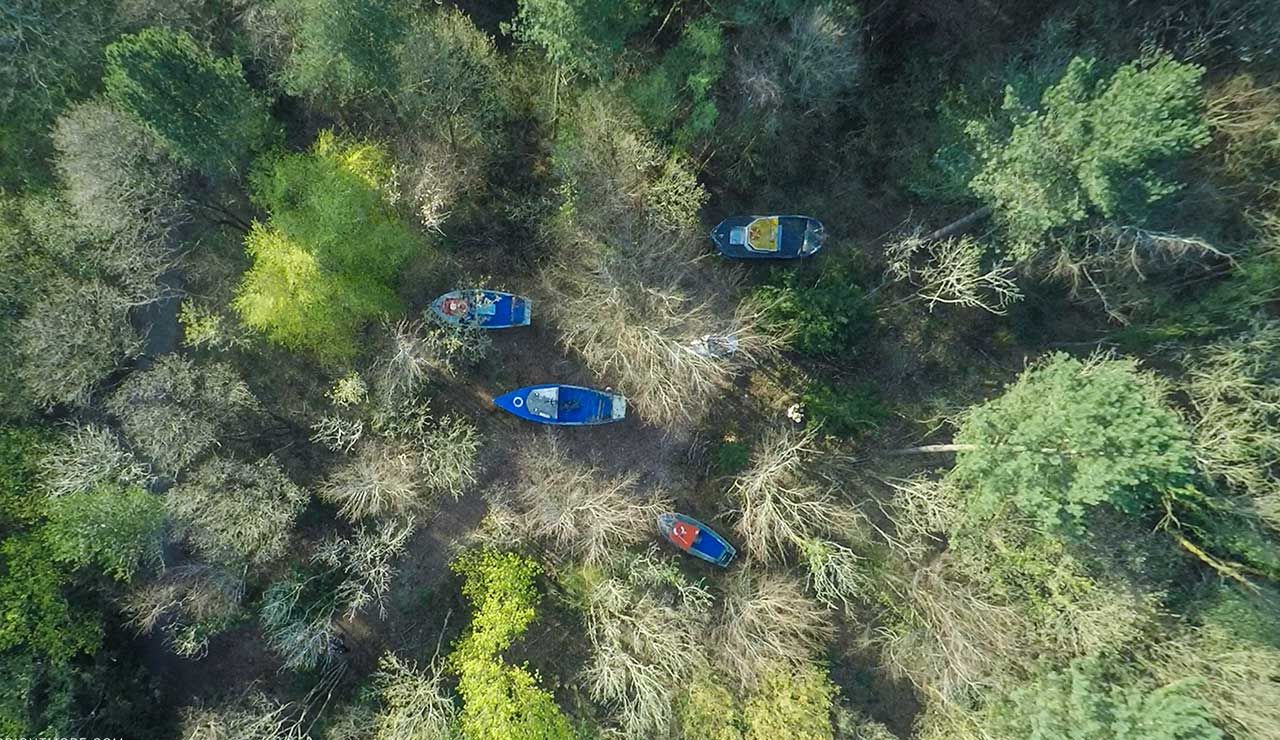
Synopsis
In what appears to be an abandoned archive, 114 domestic, analogue radio sets stacked on shelves come to life in communal song in this new work by acclaimed artists and film-makers Iain Forsyth & Jane Pollard (20,000 Days on Earth).
Individual voices are broadcast to the sets, and as some radios join together in harmony, others crackle and find the ‘inbetween space’ between clear and broken reception. Collectively these unseen singers perform a dramatic new version of Dies Irae from the Roman Catholic Requiem Mass.

"We wanted to make a new work that mourns the decline of analogue technology. Digital is too clean. It doesn’t degrade and screw up in the same way - there's no in-between spaces filled with static and white noise”.Forsyth and Pollard
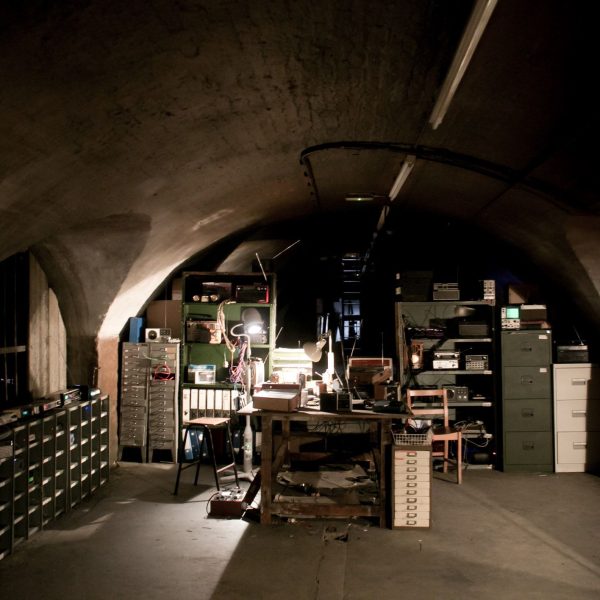
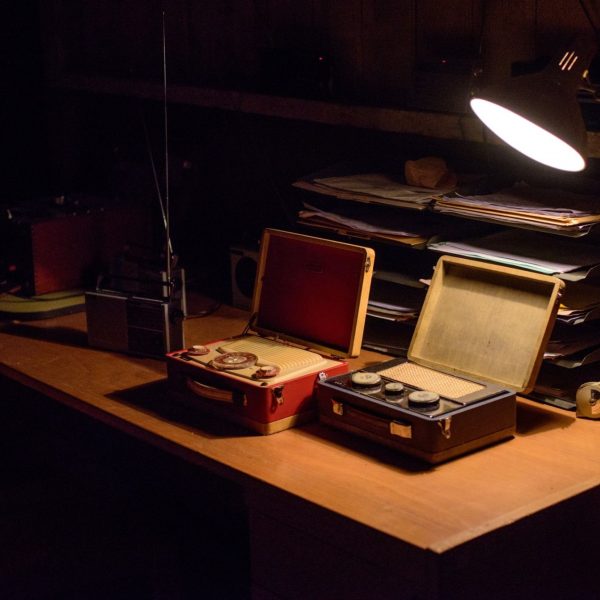
A world premiere and Bristol New Music Commission, Requiem for 114 Radios was a testament to the death of analogue technology, as the radios call upon an intricate universe of mysterious messages, modulated hisses, mangled voices and incomprehensible words. Messages of death permeate a radiophonic babel and the rarely accessed cellars of Colston Hall become the space for a remarkable and unpredictable performance.
In a space normally closed to the public (Colston Hall’s historic cellars), Requiem for 114 Radios features a rendition of Dies Irae from the Roman Catholic funeral mass, which also can be heard in the opening credits of The Shining.
“We wanted to make a new work that mourns the decline of analogue technology,” said Forsyth and Pollard, directors of the fictionalised Nick Cave documentary 20,000 Days on Earth. “Digital is too clean. It doesn’t degrade and screw up in the same way – there’s no in-between spaces filled with static and white noise”.
Guest vocalists have been invited to contribute their voice to the disembodied choir. The singers taking part are:
Matt Berninger (The National)
Jehnny Beth (Savages)
Casper Clausen (Efterklang/Liima)
Jarvis Cocker
Jimi Goodwin (Doves)
Rachel Goswell (Slowdive, Minor Victories)
Blaine Harrison (Mystery Jets)
Joe McAlinden (Linden, ex. Superstar/BMX Bandits)
Aimee Nash (The Black Ryder)
Beth Orton
Conrad Standish (Devastations)
Jonnine Standish (HTRK)
Elena Tonra (Daughter)
Rachel Zeffira (Cat’s Eyes)
Famously interpreted by composers such as Verdi and Mozart, and used to chilling effect by Stanely Kubrick in A Clockwork Orange and The Shining, the Dies Irae is a powerful portent of doom. This new work gives a playful nod to Kubrick and his fictional piece of radio equipment – the CRM 114 Discriminator – while also calling to mind Jean Cocteau’s Orpheus and the enigmatic radio transmissions which carried coded messages from the British Military to the French resistance during World War Two.
Produced by Bristol-based arts producers Gingko Projects and developed with Colston Hall, the project was the result of a public art programme funded by Urban Creation as part of the development of their Prince William and Matthew House development at Colston Street, Bristol.
Share your photos with us or tell us what you think @publicartbris #requiemfor114radios
Iain Forsyth & Jane Pollard are London-based artists and filmmakers. They met and began working collaboratively as students at Goldsmiths in the mid-nineties.
Their first feature film, 20,000 Days on Earth, premiered at Sundance in January 2014, winning directing and editing awards. The film, featuring Nick Cave, is also nominated for best documentary at the Spirit Awards and BAFTA. At the 2015 British Independent Film Awards, Forsyth & Pollard received the Douglas Hickox Award for Best Debut Director.
Performance and music culture plays a significant role in their work, and this has led to some notable collaborations. Their ambisonic sound installation with Scott Walker was presented at Sydney Opera House, a live performance, Silent Sound, was scored by Jason Pierce (Spiritualized) and their video work Walking After Acconci features the first on-screen appearance by Ben Drew, aka musician Plan B.
Their work is collected by museums and institutions worldwide, including the Tate Gallery. In 2009 the British Film Institute commissioned Radio Mania a multi-screen stereoscopic 3D video installation, their re-working of War of the Worlds Romeo Echo Delta was commissioned for BBC Radio and their first major outdoor public commission, Soon, came from the City of Toronto.
Forsyth & Pollard initially became known for pioneering the use of re-enactment within contemporary visual art. A series of major live works were commissioned by the Institute of Contemporary Arts, culminating in their critically acclaimed A Rock ‘N’ Roll Suicide (1998), a painstakingly faithful live re-creation of David Bowie’s final performance as Ziggy Stardust, 25 years after the original event. In 2003 they produced File under Sacred Music a remake of an infamous bootleg of The Cramps playing at Napa State Mental Institute, California in 1978. The artists meticulously re-staged this performance with an audience from local mental health arts organisations, in order to re-shoot each pan, tilt, zoom and jitter of the original material.
Their interest in the mechanics of live performance continues, although their focus has shifted to working with moving image and sound. Their work crosses the illusion of cinema with the presence of theatre, conjuring a psychological, conceptual and physical state between reality and hallucination.
Ginkgo Projects is an independent consultancy offering art curation and commissioning services to a wide range of clients.
Our philosophy is driven by a desire to create unique opportunities for artists and designers. We aim to contribute fresh perspectives to built and natural environments that challenge assumptions about the spaces we inhabit.
Our clients include developers, local authorities, landscape and architectural practices and environmental and arts organisations. We create real opportunities for clients and artists to produce innovative work appropriate to the context, whether this is a new building or public space, work that is integrated into a space, stand-alone work or exhibition.
